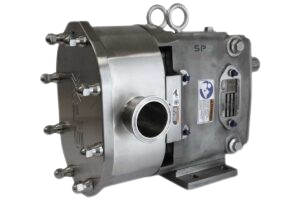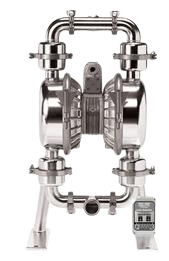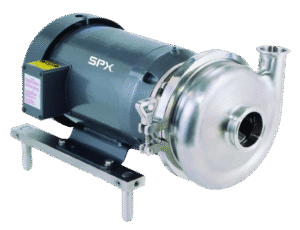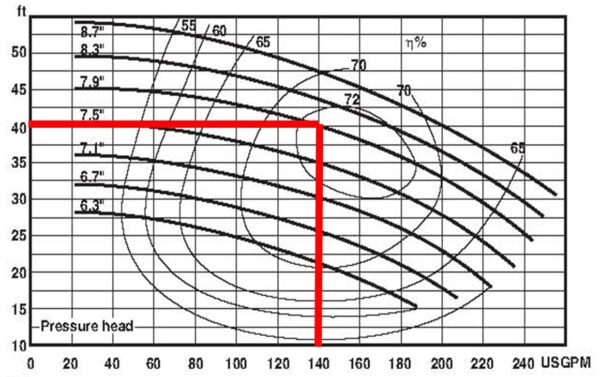4 Pump Mistakes You Might Be Making
In sanitary processing, pumps are one of the most critical pieces of equipment in the plant. Your company has invested the money in equipment.
Then what? How do you make sure you’re getting the most out of your investment?
Here’s a few common mistakes that companies make.
Choosing the wrong type of pump
A pump is a device that raises, transfers, delivers, or compresses fluids or that attenuates gases
especially by suction or pressure or both. Pressure, friction and flow are three important characteristics of a pump
system. Pumps are typically classified by the way they move fluids. In sanitary processing, the most common types are
positive displacement (PD) pumps, centrifugal (or rotodynamic) pumps, diaphragm pumps and twin-screw pumps. So
which type is right for your process? That depends on several factors.
Pumps rate by horsepower, flow rate (gpm), outlet pressure (feet of head), and inlet suction (suction feet of head). The head can be simplified as the number of feet or meters the pump can raise or lower a column of
water at atmospheric pressure. From an initial design point of view, engineers often use a quantity termed the specific
speed to identify the most suitable pump type for a particular combination of flow rate and head. Therefore, to ensure
you choose the right pump for the application, the following is a list of questions you will need to answer.
Material Properties
What is the material being pumped?
What is the material viscosity?
What is the material density or specific gravity?
What is the particle size?
What is the temperature of the material?
Is the material abrasive?
Process Conditions
What is the desired flow rate?
Where is the feed tank relative to the pump?
What is the suction lift distance?
What is the head pressure?
What is the discharge distance?
What is the inlet and outlet hose diameter?
Other Considerations
What certifications are required (FDA, 3-A, EHEDG)?
Will it be used for COP or CIP?
What is the desired price range?
What is the pressure of the shop air?
Who will clean and service the pump?
What special applications to consider?



Selecting the wrong size motor
There are at least three major considerations to keep in mind when sizing a motor to drive a pump:
- What are the power demands of the pump?
- What will typical operation look like for this pump?
- Will the pump operate on a variable frequency drive (VFD)?
While you don’t want to undersize a motor, the vast majority of motors are design with a 1.15 service factor which will
provide a bit of an insurance policy. Most motors are generally sized at predetermined intervals which means you will need to round up to the next available motor size when determining how large a motor to couple up to a pump. So if the pump power requirements indicate that the motor should be rated for at least 1.5 HP, you’ll have to round up to the next normal motor rating: 2 HP.
It’s important to size a motor properly. Doing so will produce a pumping unit that is more efficient and provides a longer
service life. Failing to size the motor correctly will result in a pumping unit that demands more power than it should or one that produces repeated electric faults and may suffer from premature motor failure.
Operating away from the Best Efficiency Point
The most common pump in sanitary processes is the centrifugal pump. When selecting a pump, an engineer will refer to a pump performance curve. The Best Efficiency Point (BEP) is a term that identifies an operating region along the pump
performance curve. It is defined at the flow at which a pump operates at the highest or optimum efficiency for a given impeller diameter.
Operating your pump too far to the left or right of the BEP can increase your operating cost and reduce the life of your pump:

- Cavitation – caused by the formation of vapor bubbles which violently collapse, damaging impeller surfaces and reducing the
- time between repairs. It typically occurs when operating too far right of BEP. As the flow increases beyond the BEP, Net Positive Suction Head required (NPSHr) also increases. When this exceeds the Net Positive Suction Head available (NPSHa), cavitation occurs.
- Vibration – when pumps operate too far right of BEP, excessive vibration can occur. Some may be caused by cavitation. It may also occur due to higher bearing loads associated with the pump operating too close to shut-off conditions. The net effect – bending and damage to the shaft.
- Reduced bearing and seal life – Cavitation and vibration will increase your maintenance costs as seals and other internal components will wear and need to be changed more frequently. Rotor instability, shaft vibration and/or failure, and higher bearing temperatures all lead to premature breakdown of lubricants and seals.
Not performing regular maintenance
Pumps, like all equipment, need regular TLC to keep them operating at top conditions and to get the longest life from your investment. The cost of regular maintenance and repair is very small when compared to the cost of major equipment breakdowns and lost production. Depending on the amount of use, regular inspection should occur every six months. The operator should check the seals and lubrication and look for signs of wear. Most manufacturers offer pump repair options including clearance checks, replacement of rotors, bearings, shafts and other internal components.

